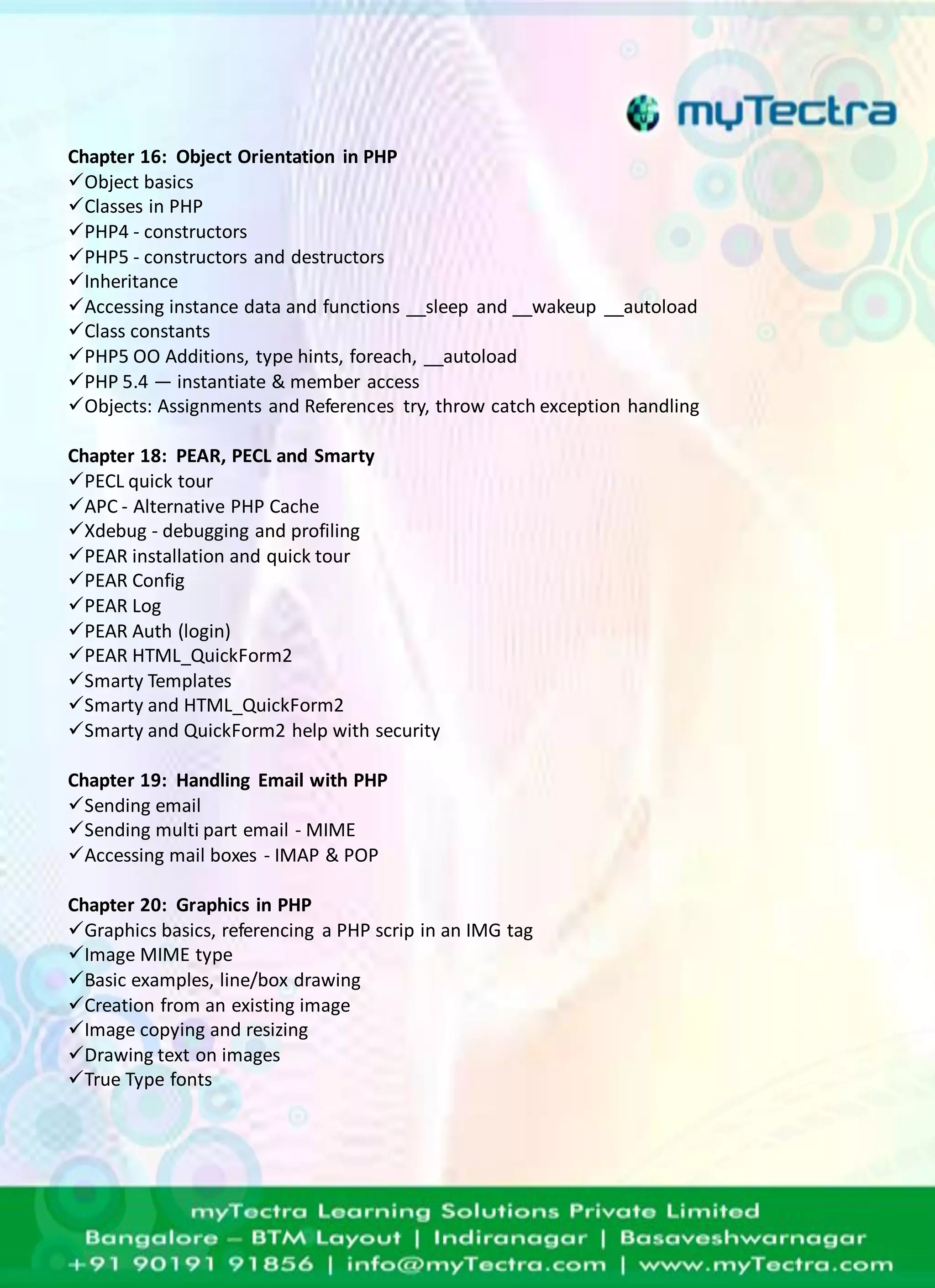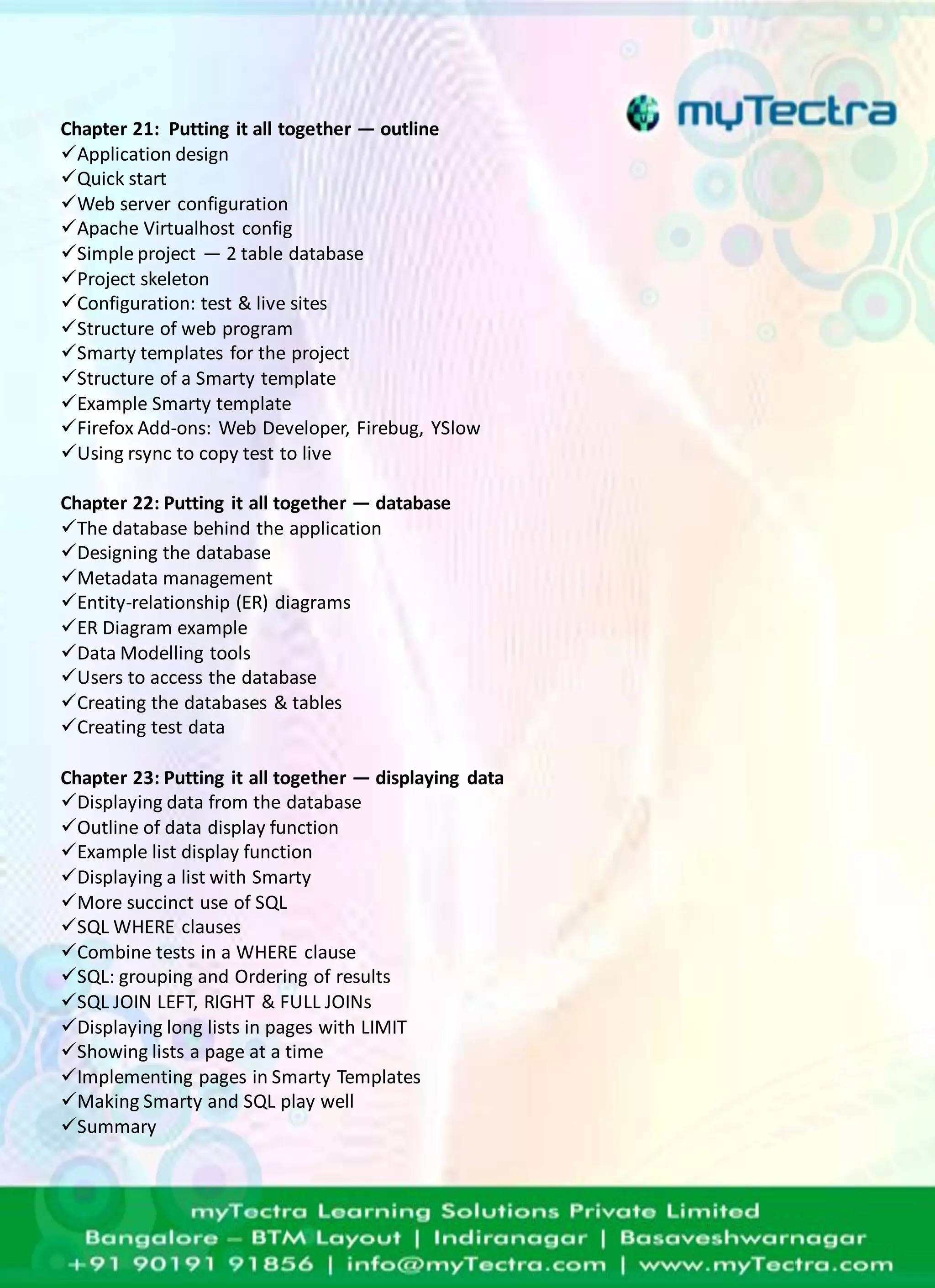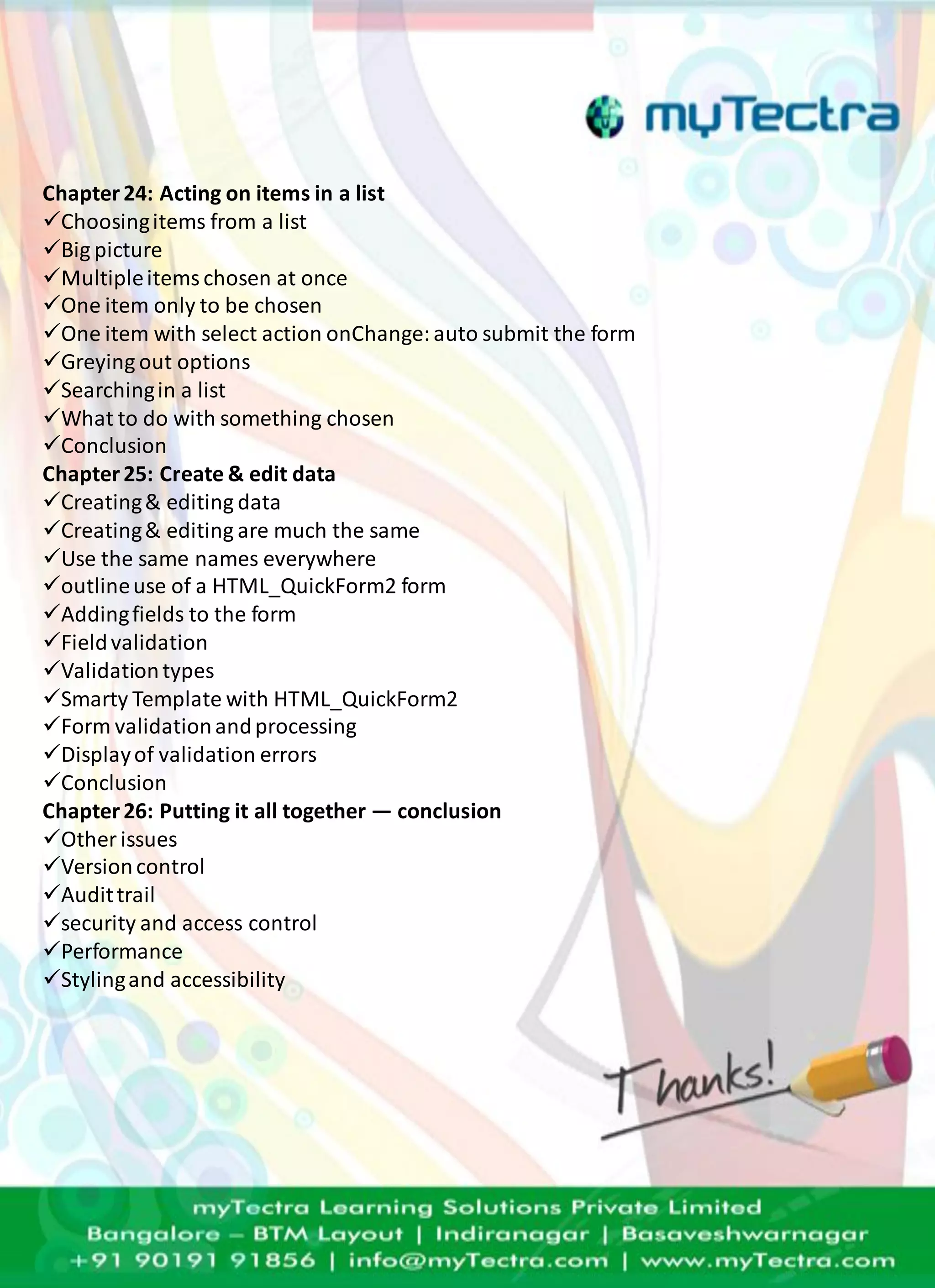The document outlines a PHP and MySQL course offered by Mytectra, providing details on course duration, training modes, and topics covered. It encompasses a wide range of subjects including PHP basics, form handling, database interaction, and object-oriented programming. The course aims to equip participants with professional skills in PHP development through instructor-led and virtual training sessions.
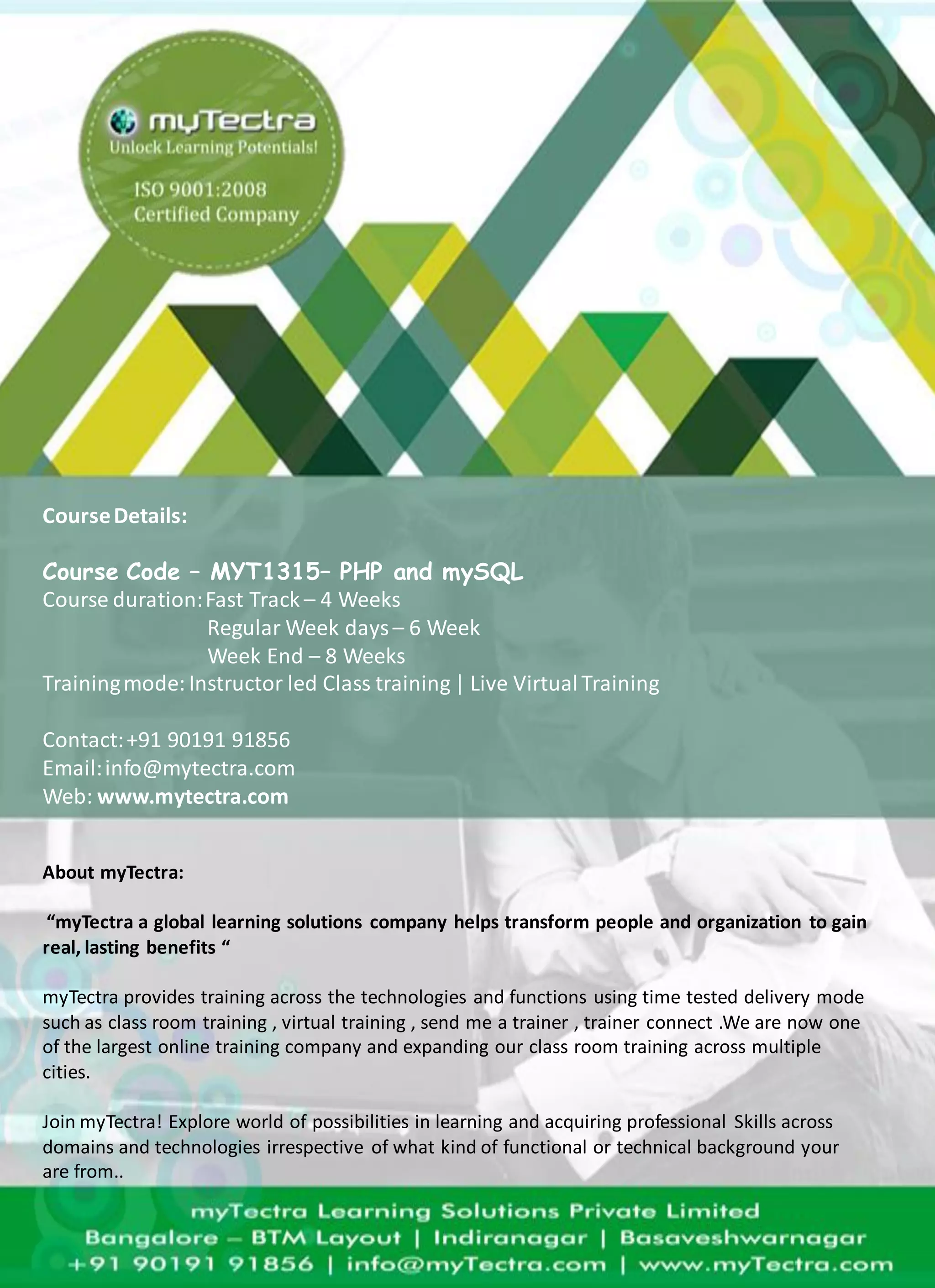

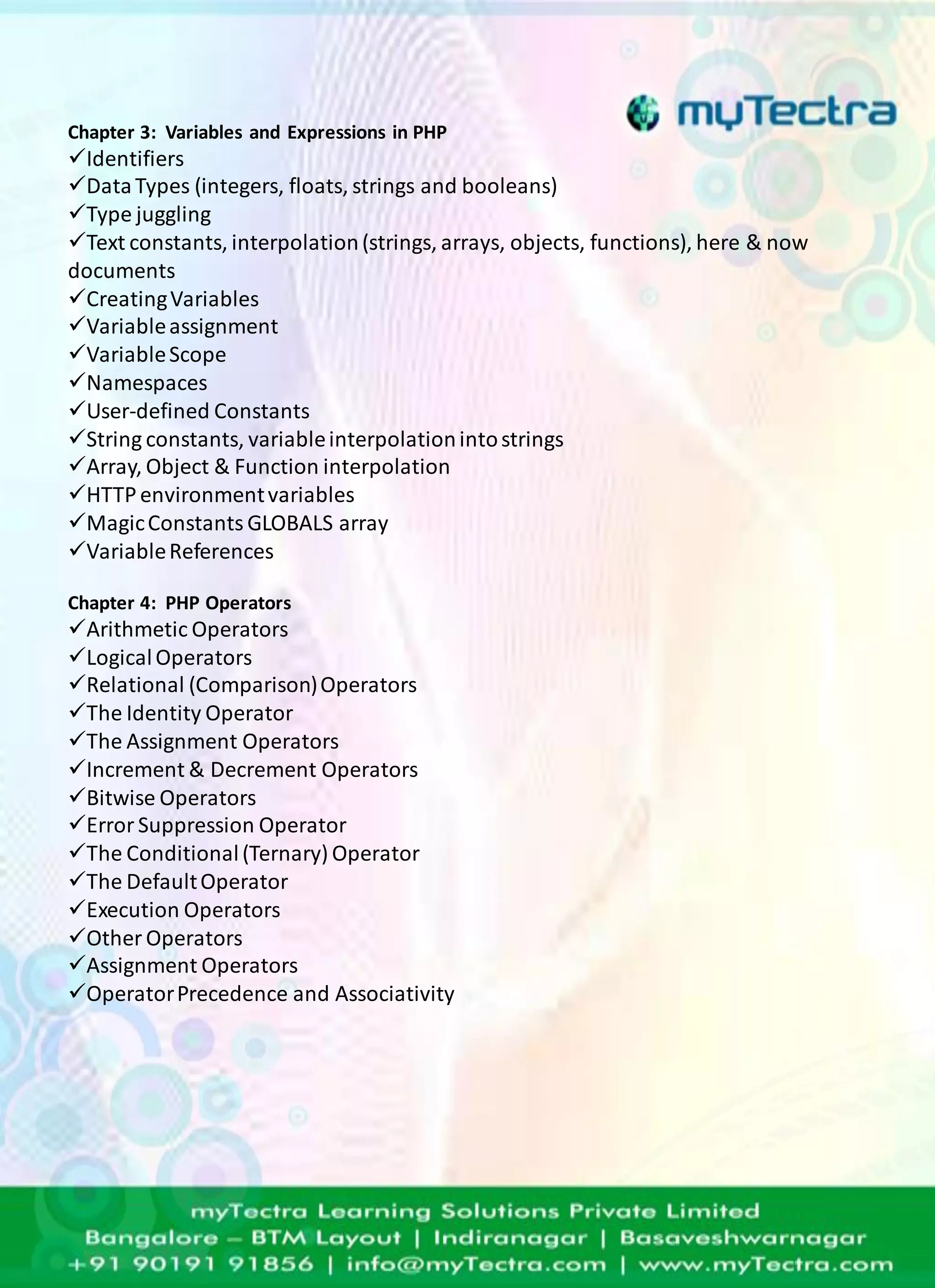

![Chapter 10: Storing Data in Arrays using PHP What are arrays? How and when to use arrays Indexing arrays, numeric and hashes Initialisingarrays Usingforeach Add/remove elements from arrays One-dimensional arrays Multi-dimensional arrays References to array elements Arrays in forms Array operators Array related functionsChapter 11: Handling Databases with PHP PHP's database APIs Error-handling strategies Connection/disconnection to the database, log in/log out Escaping strings in SQL statements Including common access functions Doing simple SQL queries via PHP Building HTML tables using SQL Queries Avoiding SQL Injection attacks Access to: MySql, MySqli, Oracle & MS-SQL Using PEAR DB Using PHP Data Objects -PDO An Insight to Smart ProgrammingChapter 12: String Manipulation in PHP Substring and [] operators Case conversion, trimming Formatting output data withsprintf Adding & removing backslashes Regular expressions Metacharacters: character classes, repetitions Regular Expression Examples Alternation and Grouping](https://image.slidesharecdn.com/mytectraphpandmysqlcourseoutline-141107074020-conversion-gate02/75/PHP-mySQL-Training-in-Bangalore-at-myTectra-5-2048.jpg)

